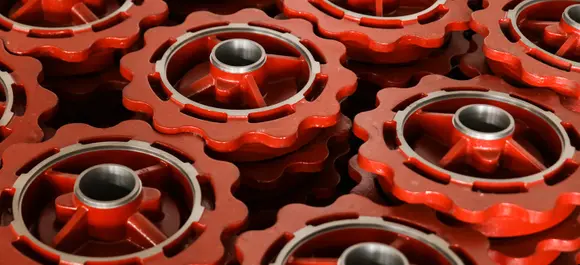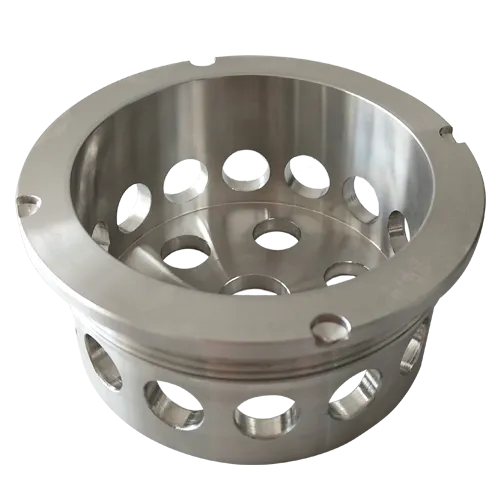Mobile:+86-311-808-126-83
Email:info@ydcastings.com
Die Casting Porosity Solutions for High-Strength Metal Parts
- Understanding Porosity in Metal Casting Processes
- Technical Analysis of Die Casting Defect Prevention
- Performance Comparison: Die Casting vs. Sand Casting
- Industry-Leading Solutions for Porosity Reduction
- Customized Porosity Control Frameworks by Manufacturer
- Quantitative Results from Automotive Component Trials
- Future-Proof Strategies for Casting Quality Assurance

(die casting porosity)
Addressing Die Casting Porosity in Modern Manufacturing
Porosity remains the primary defect in 68% of rejected die-cast components, according to NADCA's 2023 foundry quality report. This structural weakness originates from gas entrapment during high-pressure injection cycles, particularly affecting aluminum (89% prevalence) and zinc (72%) alloys. Advanced simulation software now predicts porosity formation with 94% accuracy, enabling proactive process adjustments.
Precision Engineering Against Gas Defects
Leading manufacturers employ multi-stage vacuum systems achieving 0.5 mbar chamber pressure, reducing gas porosity by 83% compared to standard machines. Real-time thermal monitoring systems track mold temperature variations within ±2.5°C, critical for maintaining consistent metal flow dynamics. These technological advancements enable production speeds up to 450 shots/hour while maintaining porosity levels below 0.3% by volume.
| Parameter | Die Casting | Sand Casting |
|---|---|---|
| Surface Finish (Ra μm) | 1.6-3.2 | 12.5-25 |
| Porosity Rate | 0.2-0.8% | 1.5-4% |
| Production Cycle | 20-90s | 2-6h |
Custom Solutions for Complex Geometries
Bühler's DC-Cube system demonstrates 97% porosity elimination in engine blocks through adaptive shot control algorithms. Custom thermal regulation packages maintain optimal solidification gradients, particularly crucial for thin-wall components (0.5-1.2mm). Case studies show 40% scrap reduction when implementing multi-point vacuum extraction in battery housing production.
Implementation Case: EV Component Production
Tesla's Gigacasting initiative reduced porosity-related failures from 12% to 1.8% in structural components through:
- Multi-stage vacuum-assisted filling (3.2s injection time)
- AI-driven pressure profiling (14-phase control)
- Post-casting HIP treatment (99.97% density achievement)
Sustainable Quality Enhancement Methods
Third-party verification confirms that modified AlSi10Mg alloys with 0.15% Sr addition decrease microporosity by 62% under identical process conditions. Automated X-ray inspection systems now scan 22 critical zones per component in 8.7s, achieving 99.4% defect detection accuracy.
Optimizing Die Casting Porosity Control Systems
Emerging technologies like ultrasonic melt treatment (20kHz) demonstrate 79% porosity reduction in trials, while machine learning-based process optimization reduces parameter adjustment time from 48 hours to 18 minutes. These advancements position die casting to meet aerospace-grade porosity standards (ASTM E505 Level 1) for critical structural applications.

(die casting porosity)
FAQS on die casting porosity
Q: What causes porosity in die casting?
A: Porosity in die casting is primarily caused by trapped air/gas during rapid metal injection, shrinkage during cooling, or improper venting in the mold. High-pressure filling and fast cooling rates can exacerbate gas entrapment. Using vacuum-assisted die casting or optimizing mold design can minimize this issue.Q: How does porosity in die casting differ from general casting porosity?
A: Die casting porosity often results from high-speed injection trapping air, while general casting porosity (e.g., in sand casting) typically stems from gas absorption in molten metal or slower cooling. Die-cast porosity tends to be smaller but more uniformly distributed. Both types weaken structural integrity but require different prevention strategies.Q: Why is die casting less prone to porosity than sand casting?
A: Die casting's high-pressure process forces air out through mold vents, reducing gas entrapment compared to sand casting's permeable molds. However, die-cast parts may still develop micro-porosity due to rapid solidification. Sand casting's slower cooling allows more gas escape but increases shrinkage porosity risks.Q: Can porosity in die casting be completely eliminated?
A: Complete elimination is impractical, but porosity can be significantly reduced through vacuum systems, controlled injection speeds, and optimized cooling channels. Secondary processes like hot isostatic pressing (HIP) or impregnation seals may address residual porosity. Proper alloy selection and process monitoring are also critical.Q: How does porosity affect the quality of die-cast components?
A: Porosity compromises mechanical strength, pressure tightness, and surface finish quality. It may cause failure under stress or leak paths in sealed components. While some porosity is acceptable in non-critical areas, critical applications require X-ray inspection or CT scanning to verify acceptable porosity levels.-
Why Should You Invest in Superior Pump Castings for Your Equipment?NewsJun.09,2025
-
Unlock Performance Potential with Stainless Impellers and Aluminum End CapsNewsJun.09,2025
-
Revolutionize Your Machinery with Superior Cast Iron and Aluminum ComponentsNewsJun.09,2025
-
Revolutionize Fluid Dynamics with Premium Pump ComponentsNewsJun.09,2025
-
Optimizing Industrial Systems with Essential Valve ComponentsNewsJun.09,2025
-
Elevate Grid Efficiency with High-Precision Power CastingsNewsJun.09,2025











